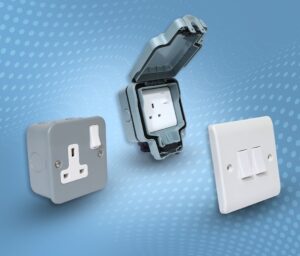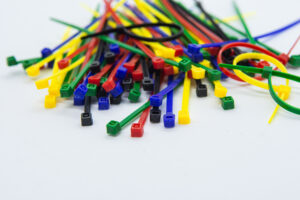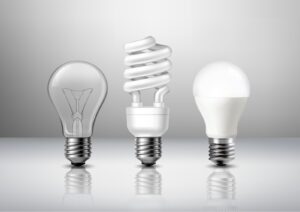Understanding the Different Types of Switches
There are many types of switches, each suited to a specific application. The most common types are indoor switches, outdoor switches, and weatherproof switches. Let’s explore the features and uses of each.
1. Indoor Switches: Versatility and Convenience
Indoor switches are the most common and widely used in residential homes. They come in a variety of styles and functionalities to fit almost any application inside the house.
Key Features of Indoor Switches:
- Variety of Designs: Indoor switches come in many designs to match your home’s aesthetic, including toggle switches, rocker switches, dimmer switches, and smart switches.
- Standard Voltage: Typically designed for standard household voltage (120V or 240V, depending on your region).
- Easy Installation: Most indoor switches are easy to install and replace, making them a great choice for DIY projects.
- Versatile Use: Indoor switches control everything from lighting and fans to appliance and security systems.
When to Use Indoor Switches:
- Living Rooms, Bedrooms, and Hallways: Use standard light switches in these spaces for everyday lighting control.
- Kitchens and Dining Areas: Consider dimmer switches for adjustable lighting or smart switches for automation and convenience.
- Bathrooms: Water-resistant switches are a must in areas like bathrooms where humidity can be an issue.
2. Outdoor Switches: Durability and Functionality in the Elements
Outdoor switches are specifically designed to withstand the elements. Whether you’re powering outdoor lights, landscape lighting, or garden fountains, you’ll need switches that can handle the exposure to rain, dust, and other weather conditions.
Key Features of Outdoor Switches:
- Built for Toughness: Outdoor switches are typically weather-resistant and made from materials like stainless steel or heavy-duty plastic.
- Waterproof Enclosures: Many outdoor switches come with enclosed covers or gaskets to keep out rain, dirt, and moisture.
- Corrosion Resistance: The materials used in outdoor switches are chosen for their ability to resist corrosion caused by weather exposure.
When to Use Outdoor Switches:
- Exterior Lighting: If you have exterior lighting around your home, such as porch lights, floodlights, or landscape lighting, an outdoor switch is ideal.
- Garage or Workshop: If you have lighting or electrical outlets in your garage or workshop, consider weatherproof switches to handle occasional rain exposure.
- Garden and Patio Areas: Use weather-resistant switches for controlling water pumps, fountains, or patio lights in your garden.
3. Weatherproof Switches: Protection Against Moisture and Harsh Conditions
Weatherproof switches offer an extra layer of protection when you need a switch to work in wet, damp, or even extreme conditions. These switches are designed to withstand more than just rain; they’re made to endure humid, flooded, or highly corrosive environments.
Key Features of Weatherproof Switches:
- Sealed Construction: Weatherproof switches come with gasket seals and water-resistant covers to ensure that moisture doesn’t enter the internal components.
- IP Ratings: Weatherproof switches often come with an IP (Ingress Protection) rating. An IP rating of IP56 or higher indicates a high level of protection against water and dust.
- Heavy-Duty Materials: These switches are built with materials that can handle extreme environmental conditions, such as marine-grade stainless steel or impact-resistant plastic.
When to Use Weatherproof Switches:
- Outdoor Kitchens and BBQ Areas: If you have electrical outlets and switches exposed to water, such as near a sink or grill, a weatherproof switch will ensure safety.
- Pools and Hot Tubs: For pool or spa equipment, use switches designed to prevent electrical hazards caused by water exposure.
- Coastal or Humid Locations: In coastal regions where saltwater corrosion is a concern or areas with high humidity, weatherproof switches will protect your system from damage.
How to Select the Right Switch for Your Space
Now that we’ve broken down the types of switches, here are a few considerations to keep in mind when selecting the right one for your home:
1. Location Matters
- Indoor Use: Choose regular indoor switches that match the aesthetic of your interior. If you need flexibility, consider a dimmer switch for adjusting lighting levels.
- Outdoor Use: Always opt for weather-resistant or waterproof switches. For minimal exposure, a covered outdoor switch might suffice. For high exposure, go for fully weatherproof switches with high IP ratings.
- Wet Areas: For bathrooms, kitchens, or areas exposed to water, choose switches labeled water-resistant or IP-rated.
2. Consider the Functionality
- Single-Pole vs. Three-Way Switches: If you need to control the same light from two different locations (e.g., at the top and bottom of a staircase), go for three-way switches.
- Dimmer or Smart Switches: Want more control? Consider dimmer switches for mood lighting or smart switches that can be controlled from your phone or home automation system.
3. Look for Certifications
- UL Listed: Ensure the switches you choose are UL certified (Underwriters Laboratories), meaning they’ve passed rigorous safety testing.
- Weatherproof Rating: For outdoor or wet environments, look for switches with a high IP rating to ensure they meet your durability and safety needs.
4. Material and Durability
- Material Choice: If you live in a coastal area or an environment with high humidity, look for switches made from marine-grade stainless steel or impact-resistant materials.
- Corrosion Resistance: Choose corrosion-resistant switches for areas exposed to moisture and humidity.
Conclusion
Selecting the right switches for your home is an important part of electrical planning. Whether you’re upgrading your interior switches, outfitting your yard with outdoor lighting, or ensuring safety around wet areas, it’s crucial to pick the right switch to suit the environment and the function.
For indoor spaces, standard switches with dimming options or smart controls can offer versatility and convenience. For outdoor areas, ensure your switches are weather-resistant to handle the elements. If you’re dealing with moisture, high humidity, or coastal environments, weatherproof switches will offer the protection you need to keep everything running smoothly.
By considering your home’s specific needs and the conditions the switches will face, you can make the best choice for safety, functionality, and aesthetic appeal.
Stay safe, and happy switching!






